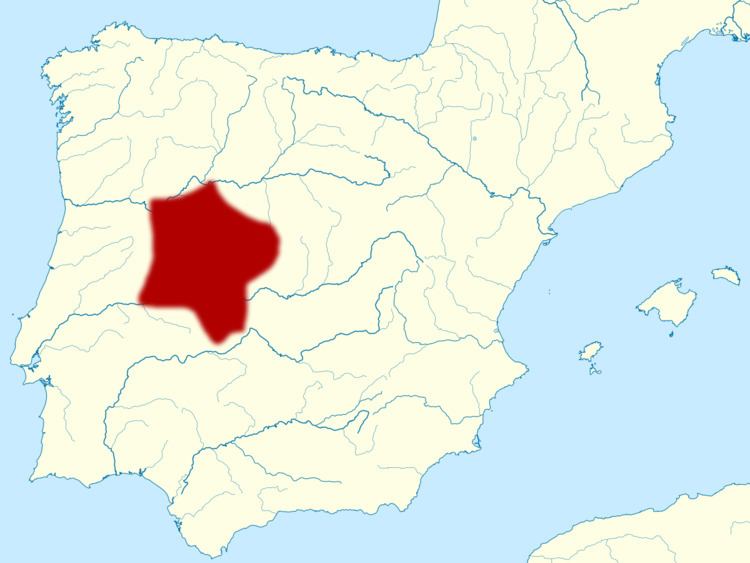 | ||
The Vettones (Greek: Ouettones) were a pre-Roman people of the Iberian Peninsula of possibly Celtic ethnicity.
Contents
Origins
Under a controversial interpretation, John T. Koch has proposed a western Hispano-Celtic classification for the Vettones. A Celtiberian origin has also been claimed. Organized since the 3rd Century BC, the Vettones formed a tribal confederacy of undetermined strength. Even though their tribes’ names are obscure, the study of local epigraphic evidence has identified the Calontienses, Coerenses, Caluri and Bletonesii but the others remain unknown.
Culture
A predominately horse- and cattle-herder people that practiced transhumance, archeology has identified them with the local 2nd Iron Age ‘Cogotas II’ Culture, also known as the ‘Culture of the Verracos’ (verracos de piedra), named after the crude granite sculptures representing pigs, wild boars and bulls that still dot their former region. These are one of their most notable enduring legacies today, the other possibly being the game of Calva, which dates to the time of their influence. The Iron Age sites and respective cemeteries of Las Cogotas, La Osera, El Raso de Candeleda, La Mesa de Miranda and Alcántara have provided enough elements – weapons, shields, fibulae, belt buckles, bronze cauldrons, Campanian and Greek pottery – which attest the strong contacts with the Pellendones of the eastern meseta, the Iberian south and the Mediterranean.
Location
The Vettones lived in the northwestern part of the meseta—the high central upland plain of the Iberian peninsula—the region where the modern Spanish provinces of Ávila and Salamanca are today, as well as parts of Zamora, Toledo, Cáceres and also the eastern border areas of modern Portuguese territory. Their own capital city, which the ancient sources mysteriously failed to mention at all, has not yet been found though other towns mentioned by Ptolemy were located, such as Capara (Vendas de Cápara), Obila (Ávila?), Mirobriga (Ciudad Rodrigo?), Turgalium (Trujillo, Cáceres), Alea (Alía – Cáceres) and probably Bletisa/Bletisama (Ledesma, Salamanca). Other probable Vettonian towns were Tamusia (Villasviejas de Tamuja, near Botija, Cáceres; Celtiberian-type mint: Tamusiensi), Ocelon/Ocelum (Castelo Branco), Cottaeobriga (Almeida) and Lancia (Serra d’Opa).
History
Traditional allies of the Lusitani, the Vettones helped the latter in their struggle against the advancing Carthaginians led by Hasdrubal the Fair and Hannibal in the late 3rd century BC. At first placed under nominal Punic suzerainty by the time of the Second Punic War, the Vettones threw off their yoke soon after 206 BC. At the Lusitanian Wars of the 2nd century BC they joined once again the Lusitani in their attacks on Baetica, Carpetania, the Cyneticum and the failed incursion on the North African town of Ocilis (modern Asilah, Morocco) in 153 BC. Although incorporated around 134-133 BC into Hispania Ulterior, the Vettones continued to raid the more romanized regions further south and during the Roman civil wars of the early 1st century BC, they even provided auxiliary troops to Sertorius’ army in 77-76 BC. Crushed by the provincial propraetor Julius Caesar in 61 BC, they later rose in support of Pompey's faction and fought at the battle of Munda (Montilla – Córdoba) in Baetica.
Romanization
The Romans promptly began to establish military colonies at Kaisarobriga or Caesarobriga (Talavera de la Reina – Toledo) and Norba Caesarina (near Cáceres), and in around 27-13 BC the Vettones were aggregated to the newly created Roman province of Lusitania with Emerita Augusta (Mérida) as the capital of the new province.
Namesake
The Vettones are not to be confused with the Vettonenses, inhabitants of Vettona (today's Bettona) in Umbria.
